Showcasing the sector as an exciting place for disabled workers






“It

Showcasing the sector as an exciting place for disabled workers






“It
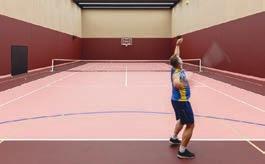

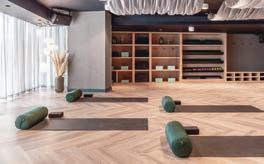











appy 2023! Hope your end-of-year festivities were bright and merry, making the transition into the new year a happy beginning!
A theme of ‘triumph over adversity’ seems right for this issue of S&PA Professional. For examples, check out our features about how differentlyabled staff are making their mark at gyms and leisure centres (page 30 ), the steps being taken to ameliorate the symptoms of menopause for women who value their fitness (page 26 ) and the progress being made to diversify the non-executive
boards of organisations in our sector (page 34 ).
We’ll also take you to St Sidwell’s Point in Exeter, the UK’s first Passivhaus standard, ultra-low carbon leisure centre, designed to save up to 70% on annual energy costs (page 20 ).
Sadly, our gyms and leisure centres – along with homeowners and everyone else in the UK – enter 2023 battling with extraordinarily high energy costs, a challenging situation to overcome to say the least. But as usual, our stalwart operators and their employees are knuckling down
email subs@redactive.co.uk
© Redactive Publishing Ltd.
S&PA Professional is published on behalf of the Chartered Institute for the Management of Sport and Physical Activity (CIMSPA) by Redactive Publishing Ltd. All rights reserved.
This publication (and any part thereof) may not be reproduced, transmitted or stored in any print or electronic format (including but not limited to any online service, any database or any part of the internet) or in any other format in any media whatsoever,
to lessen the impact of the spiralling costs on customers. Your efforts are appreciated!
Get warm and stay warm – may this year be good to you!
without the prior written permission of the publisher.
Redactive Publishing Ltd accepts no liability for the accuracy of the contents or any opinions expressed herein.
Printed by Manson Group ISSN 2050-7747
Chartered Institute for the Management of Sport and Physical Activity
SportPark, Loughborough University, 3 Oakwood Drive, Loughborough, LE11 3QF
Tel 03438 360 200 E-mail info@cimspa.co.uk Web www.cimspa.co.uk
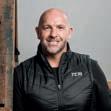 By Rachel Masker
By Rachel Masker
Leisure centres and gyms across the country are reducing their opening hours, making pools cooler and turning off hot tubs due to sky-high energy bills.
Job cuts and price hikes are also on the agenda as operators face a double whammy of a slow return of customers post-lockdown and soaring energy costs.
Long opening hours, power-hungry gym equipment and heated pools create a formula for very high energy bills. Better Leisure, one of the UK’s largest pool providers, has been forced to reduce opening hours this winter.
The enterprise, which runs 268
centres across the UK, said its energy costs have more than tripled since 2019 and is now equal to 25% of the total cost of running each site.
More than 200 centres will have shorter hours from December until Easter (9 April 2023 ). Mark Sesnan, CEO of parent company GLL, wrote in an email: “In practice, some centres will open an hour later or close one hour earlier on some days. This will enable us to turn off lighting, plant and equipment at the time of maximum energy use, when it’s coldest and darkest. This is also when we are least busy.”
Active Nation, a health and wellbeing charity, runs 18 leisure venues, including seven pools, on behalf of councils. Most are centred around the Midlands and South of England. The charity is also facing bills 300% higher than in 2019.
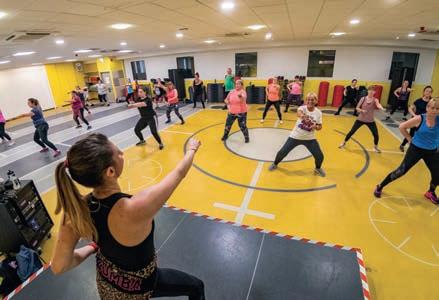
CEO Stuart Martin (right, inset) said operators typically had energy deals fixed for three years, or even longer – and a sizeable chunk of the price hike has come sharply in the last year.
He said: “We are feeling the pain now because our contract ended in September, but other operators may not feel the effects for another six months or so. Unlike the pandemic, this crisis isn’t happening to everyone at the same time. The effects are more staggered.”
Active Nation is cutting 50 jobs at HQ and local centres by Christmas – 10% of the workforce. The challenge is to make savings without compromising safety, said the charity boss: “You still have to lifeguard the pool.” It was a “tough call” to make because Active Nation had survived the pandemic without shedding any staff, added Martin.
Pool temperatures have already been reduced by 2 deg C. “We haven’t had any complaints,” said Martin. While membership remains unchanged at an average £42 per month, prices for individual pool and gym sessions and classes have risen by 3-5% to help balance the books.
Despite a government scheme providing a discount to businesses for six months from 1 October to protect them from soaring prices so they are “able to get through the winter”, some public pools have already shut their doors, including South Moulton Pool in Devon, run by 1610.
More than 100 pools are under threat of closure or reduced hours due to the energy price crisis, according to Swim England. While some local authorities have agreed rescue packages, the reality is council budgets are under growing pressure, says the national governing body for swimming.
Derbyshire Dales District Council stepped in with £204k extra funding for four centres run on its behalf by Freedom Leisure to support them through the energy price crisis. The cash injection is equal to about 75% of the increase in costs, says the council.
Freedom Leisure
temporarily closed two pools at Willen Lakes, Milton Keynes and Rye Sports Centre, East Sussex after its CEO Ivan Horsfall Turner announced its “crippling” energy bill had increased from £8m to £20m. The non-profit, which runs about 60 pools on behalf of councils and teaches 2,000 children to swim on a weekly basis, is backing Swim England’s nationwide #SaveOurPools petition.
Freedom Leisure has also reduced opening hours at seven of the sports centres it runs on behalf of Brighton and Hove City Council and is proposing job cuts and price hikes at five leisure centres it manages for New Forest District Council.
In the private sector, Nuffield Health has closed its spa pools and turned off its Jacuzzis until spring. The gym giant owns 114 facilities – all pools – and said the decision allowed them to keep their pools, steam rooms and saunas open. Better Gyms, which operates 258 council-owned gyms, is facing similar challenges. The operator is reducing the temperature of the water and air in their pools by 1 deg C on average.
Everyone Active, which runs more than 200 venues on behalf of local councils, is also facing energy bills increases of more than 300% but has no plans to close pools or reduce opening hours. Instead, the enterprise is pushing to become greener by reaching net zero emission targets. David Greenwood, head of operations, said: “As a business we are doing all we can to mitigate the increase energy cost through innovation, investment and educational campaigns.”
For instance, Bourton and Cirencester Everyone Active centres in the Cotswolds among others have switched to renewable energy, replacing gas boilers with air source heat pumps, solar PV panels and solar thermal. Everyone Active is also cutting waste with its ‘Everyone is Saving Energy’ campaign.
Greenwood said rising energy bills are a long-term issue facing the industry. “We will continue to work closely and communicate with our local authority partners as we need their support to secure the future of our leisure centres.”


Energy saving will top the bill at SPATEX 2023 when the latest water leisure innovations and new products are unveiled at the exhibition’s 27th edition at the Coventry Building Society Arena from Tuesday 31st January to Thursday 2nd February.
With over 100 exhibiting companies, including leading international manufacturers, launching a host of new products, this is a must-attend event for all those involved in the provision and maintenance of water leisure facilities. From spas, wellness suites,
swimming pools and steam rooms to saunas, water features, enclosures and all their ancillary equipment, SPATEX is the one and only chance in 2023 to view the fast-moving, innovative world of water leisure under one roof.
Reducing energy consumption will also feature in SPATEX’s free-to-attend, double seminar programme, along with up-to-the-minute health and safety guidance. CPD points are available for attendees of the technical Workshops. There’s no better place to seek impartial advice from experts, and all for free.
Register now for FREE www.spatex.co.uk
After another difficult year for our sector, I am feeling confident that 2023 will see us return to pre-Covid levels of activity.
Sport England’s latest Active Lives Children and Young People survey shows that children’s activity levels are back to pre-pandemic levels, but also note that more needs to be done.
I’m also encouraged by the significant shift I’ve witnessed over the last year as our sector transitions into health, community and tackling inequalities (see p15).
CIMSPA is focused on ensuring that those who make a difference – our people – are qualified, competent, safe and supported.
2023 also sees the start of our planned strategy to roll out skills hubs to tackle the recruitment and skills shortage, ensuring we have the breadth and depth of skills required to continue to grow our sector with a more inclusive and diverse workforce.
At the time of writing, we are awaiting further details of Energy Bill Relief Scheme. It is essential that Government responds to the sector’s demands for support in light of unsustainable energy costs. Failure to act could mean the closures of much needed facilities and the essential programmes they deliver.
I hope for a positive response from Government and wish you a successful 2023.
TARA
In a remarkable partnership with an NHS hospital trust, CIMSPA supplier partner Myzone is helping to improve the health and wellbeing of 16,000 healthcare professionals.

The NHS is one of the largest employers in the world, and is the biggest in Europe, with over 1.3 million staff. Yet, it is in the grip of a well-documented workforce crisis with severe staff shortages and higher rates of sickness absences than the rest of the UK economy. Anxiety, stress and depression are consistently the most reported reasons for sickness absence among NHS staff. And, according to NHS Digital, mental ill health accounts for over 20% of sickness absence in the NHS.
The global Covid-19 pandemic took a significant toll on healthcare professionals across the UK, and none more so than those working at University Hospitals of Derby and Burton NHS Foundation Trust (UHDB) – the third-largest provider of elective care, fifth largest provider of emergency care, and sixth-busiest A&E department in the country.
Looking for ways to support his NHS colleagues through those challenging times led James Buckley, head of Wellbeing and Workforce Health Services at UHDB, to reach out to wearable fitness technology specialist Myzone to assist with a pilot wellness programme.
“Historically, our wellbeing offer lacked meaningful engagement, largely comprising reactive service-solutions that responded to sickness, conduct, or attendance issues only. We set out to establish a model of person-centred sustainable, accessible, and equitable preventative support,” he explains.
The ‘Do Whatever Moves You’ pilot launched mid-2021 to provide physical and mental health support to NHS colleagues. Buckley worked with the trust’s HR and occupational health and
welfare teams to identify staff who would benefit most from the pilot, including colleagues with musculoskeletal conditions, those who may benefit from additional psychological support and staff who had been absent from work.
Four hundred health professionals across UHDB signed up for the six month initiative, which utilised the Myzone fitness tracker and online social platform. The technology enabled staff across the Trust to track and share their
physical exercise and provided a platform for people to engage and connect with their colleagues, while being rewarded for their effort.
The wearable technology also allowed UHDB to examine, monitor and increase the physical and psychological wellbeing of staff during the pilot. Challenges were run every month to keep participants engaged and on track to reach their monthly MEP (Myzone Effort Point) target, while the app provided opportunities for social
connection and support.
The University of Leeds researched the effectiveness of the programme. The preliminary research findings are extraordinary.
Over the course of six months, the cohort completed more than 44,000 activity sessions, burned over 14 million calories and completed the time equivalent of more than six years’ continuous exercise.

Sixty-five per cent of those who completed the pilot went from no or close to no physical activity to maintaining a regular exercise routine for at least six months. And from those who completed the pilot, 79.6% achieved 1,300 MEPs every month, which equates to the World Health Organization’s (WHO) recommendations for physical activity. Overall, 60.2% of participants who finished the study went from zero or close to zero physical activity to exercising consistently at a level that meets WHO guidelines every month.
As a consequence, participants experienced significant improvements in their overall health, including increases in muscle mass and reductions in body fat as well as a whole host of psychological benefits that come with exercise.
The programme significantly improved life satisfaction and happiness among those who took part. Its benefits extended beyond exercise with participants consuming more fruit and vegetables and reducing their consumption of alcohol.
“The pilot brought people together at time when they had never been more fragmented. Most of our colleagues on
the programme were at the beginning of their fitness journey, weren’t routinely exercising before they started the programme and had never considered the wider ts of an active lifestyle,” says Buckley.
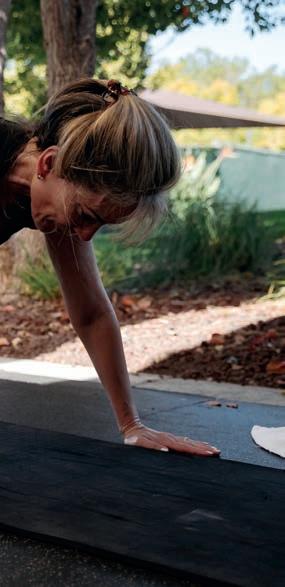
Jonathan Monks, director, EMEA at Myzone, said the scheme demonstrates the power of community in driving exercise habits.
“Our own research shows that people with four or more Myzone social connections exercise 41% more than those with zero connections. The University of Leeds’ findings support this, showing participants who interacted most with their NHS colleagues by sharing the workouts and experiences, were most likely to develop lasting exercise habits.”
“Myzone exists to make people feel good about exercise by creating positive experiences, which impact both mental and physical health. This valuable study shows how organisations can implement successful and sustainable corporate wellness programmes by making fitness inclusive for all employees, creating supportive communities and rewarding staff for their active lifestyles.”
Such was the success of the pilot, that it has now been rolled out to the Trust’s 16,000 health professionals, working across nine locations.
UHDB’s Wellbeing Team was also shortlisted for their work on the project for the ‘Best Use of Workplace Technology Award’ at the 2022 Nursing Times Workforce Awards.
Viveen Taylor’s appointment came shortly after Sport England launched its 10-year strategy, Uniting the Movement, which has placed tackling inequalities at the heart of its 10-year commitment to use sport and physical activity to create a healthier and happier society.
Since then, the organisation has conducted several major pieces of work. These include the independent Tackling Racism and Racial Inequality in Sport Review (TRARIIS) with UK Sport and the other home country Sports Councils, as well as a formal review of the Code for Sports Governance, again in collaboration with UK Sport.
Sport England has also held a mirror up to itself, assessing its own policies and procedures to ensure a strong focus on equality, diversity and inclusion (EDI).
“Well I feel like we’re getting to grips with what’s really needed, and it’s
beginning to feel like we’re on a positive trajectory – going in the right direction so to speak; but you’re never there with EDI. There’s always something to do or to prepare for,” says Taylor.

And that’s fine, because true EDI is a continuous learning and adjusting process and not a box ticking exercise, she says.
“It’s not always about targets as there’s a tendency to reach the target and consider the job done. We want organisations to be committed to wholesale long-term change, embedding equality, diversity and inclusion as a way of being, not stopping at quotas.
“It’s a long and sometimes painful journey, but well worth it if you see the positive outcomes and a more engaged and inclusive sporting environment.”
Sport England’s mission is to make sure everyone – regardless of background, bank balance, gender or where they live – has the opportunity to get active.
And is helping its partners on that journey, as Uniting the Movement is a strategy and ambition that can only be delivered in partnership. This is why
Sport England has invested £600m into a new ‘system partners’ process, moving away from transactional relationships to a more collaborative approach to tackling inequalities, which puts people at the heart of the ambition, and in particular those from communities that are traditionally left behind.
In a revolution to Sport England’s previous investment approach, the new system partner model means that organisations which can play a systemic role in Uniting the Movement receive investment lasting up to five years, creating the long-term security needed to deliver change.
Through its Together Fund programme, the organisation is working directly with national partners, Active Partnerships and some national governing bodies to distribute funding directly into communities that have not only been disproportionately affected by Covid-19 but are likely to be impacted by the rising costs of living.
Sport England’s partners play an important role in reaching further into communities, engaging more people and understanding how to retain their engagement for the long-term.
Two years into the role, we talk to Sport England’s first director of EDI about the sector’s journey to true inclusion
“I’m encouraged by the increased levels of enthusiasm from our partners about how they want to tackle inequalities in sport and physical activity,” Taylor says.
“We have commissioned additional external support for all our system partners to develop diversity inclusion action plans, helping partners consider the necessary change and the steps needed to make that change a reality.”

Sport England’s vision is for the sport and physical activity sector to be inclusive and representative of the population, from grassroots all the way to its most senior teams. That includes athletes, referees and technical teams as well as volunteers, the workforce and both executive and non-exec leadership.
“The whole sector needs to take ownership of this,” says Taylor.
But it’s not enough to simply employ an EDI specialist and hand the responsibility over to them.
“This is about ownership and accountability throughout the entire organisation. If the EDI lead/team feels
they are doing this on their own, it will be a challenge and unlikely to lead to sustained change. Inclusion and diversity must be driven by strong leadership until it becomes so embedded in the organisation that it forms part of its natural identity,” she says.
“EDI needs to be co-considered. Go to your stakeholders; they are the true litmus test of whether what you are doing is making a difference; whether people feel included, feel they belong and that they are welcome, regardless,” she advises.
“From my experience, people are no longer willing to be ‘done to’; they want to be engaged with and have their voices heard and included. Talk to women and girls, LGBTQ+ communities, disabled people and find out if your sport or offer is truly inclusive.”
Taylor is sympathetic to the concerns of those who are worried about getting it wrong, nervous of using unfamiliar language and terminology, and above all anxious of causing offence.
But if the sector is to become truly inclusive and understand the benefits of equality, we have to overcome this fear. Organisations must create safe spaces where colleagues can talk openly, raise their concerns and get feedback without the fear of being judged.
“We have to support our colleagues in the conversations they are having about inclusion, diversity and equality,” says Taylor. “If people are too worried about causing offence they won’t say anything at all. We’ve got to be able to talk openly and with respect, if we’re to break down barriers and create the right culture.
“Diversity in the workforce is critical to demonstrating your commitment to equality. Representation within the workforce is one of the TRARIIS and Tell Your Story themes for action to help drive better diversity in the sector.
‘system
People connect better when they see people who look like them.
“The ‘see it to be it’ concept, really can be a game changer and we should use every opportunity to check and challenge the need to have a diverse workforce who are continually invested in and supported to deliver the ambition.
“So, if we want to reach communities in a genuine and inclusive way, then the workforce must reflect that commitment through it’s make up.”
Being coached by someone who has a similar background to you can be incredibly powerful and it can impact the career paths young people might choose to follow, Taylor says.
Encouragingly, the overall number of sports coaches from culturally diverse communities is roughly equivalent to the overall number of people from those backgrounds nationally, but this figure can vary significantly by location.
“What’s less encouraging is the representation of other communities within the coaching workforce,” she adds. “For instance, we know that disabled people make up about 22% of the total UK population, but yet only 6% of the coaching workforce is disabled. Where are the examples that tell young disabled athletes they could go on to have a coaching career? These are [what] we need to see more of if we want inclusion to be anything more than a buzz word.”
For more insight into Sport England’s partnership work to drive EDI at top levels in the sector, see feature on p34-37.
“Talk to women and girls, LGBTQ+ communities, disabled people and fi nd out if your sport or offer is truly inclusive”
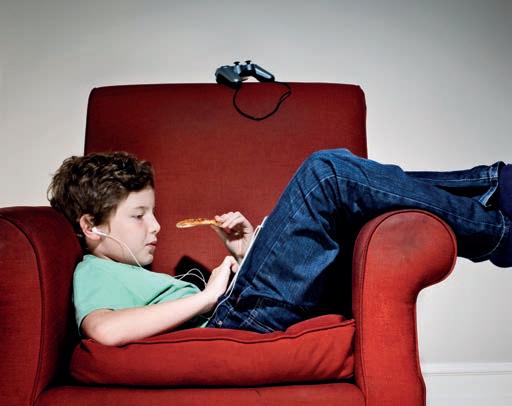
There is no one solution to solving the nation’s inactivity crisis but ensuring children and young people have positive experiences of sport and physical activity is a good place to start.
Youngsters who are physically active are more likely to exercise in adulthood, and research has linked regular activity with academic attainment. Despite this, too many children and young people in the UK are failing to meet the recommended guidelines for physical activity.
Aspire Active Partnerships is working to reverse this trend. Established in 2016, the group supports organisations in the children’s activity and sports coaching sector to improve children and young people’s participation in sport and physical activity with innovative delivery and training services as well as resources that educate and inspire.
Its education arm, Aspire Active Education, engages youngsters in activity through a variety of programmes designed to improve physical literacy, health, wellbeing and academic achievement.
Launched in 2005, the organisation has developed a wealth of knowledge and expertise over the last 17 years.

Aspire Active Partnerships has now entered into a strategic partnership with CIMSPA to set new standards in sport and physical activity services for children and young people.
“We know that if we improve the skills of those working in our sector and give people the opportunity to become better leaders, we will naturally see enhanced levels of service which will result in more children being active,” says Paul Griffiths, co-founder of Aspire Active Partnerships.
The lack of operational standards is an issue for the youth activity sector, says Griffiths, especially as more companies enter the market.
“The sector is not very well policed in terms of quality of delivery. The organisations in our network employ their team members and invest in their training and development to deliver better services, but many are competing with companies that employ freelancers, with little training. It means they have fewer overheads and can undercut more established sports coaching businesses.
“With strained budgets, we can see why schools choose organisations based on cost, but too often the services they are purchasing are inadequate in terms of quality and compliance. If they were more aware of the regulatory
elements and investment being made by organisations like Aspire and those in our network, they may be more likely to choose to invest in high quality opportunities that are safe and impactful.
“I can change a plug, but that doesn’t mean I should set myself up as an electrician, and that’s what we are currently seeing in this sector. There’s no quality control. This is why we need to set standards that define the skills and qualifications needed to deliver high quality sport and physical experiences to children and young people. And this is where our strategic partnership with CIMSPA will help.”
Aspire Active Partnerships is growing. Before the pandemic, 20 organisations belonged to the network. That figure
has more than doubled since then and Griffiths expects membership to reach triple figures over the next three years.
“Companies were wary about working with others in the youth activity market, but since the pandemic they’ve understood the value of being part of a wider business network, the benefits of collaboration and sharing best practice with ethical leaders and employers who are passionate about innovating to get more youngsters active.”
Together the organisations are engaging 400,000 children and young people a year in sport and activity. Despite this, Griffiths believes the wider health and fitness industry undervalues the work of the youth activity market.
“When I was at university, working with children in sport was not considered a ‘proper job’ and our

sector still isn’t recognised for our work or our impact.”
And more needs to be done to get the education sector onside too, he believes.
“Some schools still don’t see the value of sports coaches in schools beyond supporting PE teachers. Yet, primary teacher training typically only dedicates one day to covering the entire PE curriculum. If the teachers themselves had poor experiences of PE growing up, they won’t have the confidence to deliver high quality PE sessions, so their pupils will get a poor experience and the cycle continues.”
Investing in workforce development will help, especially as working with children and young people requires a unique set of skills, says Griffiths.
“We need absolute clarity on guidance, and we want to champion the importance of minimal standards
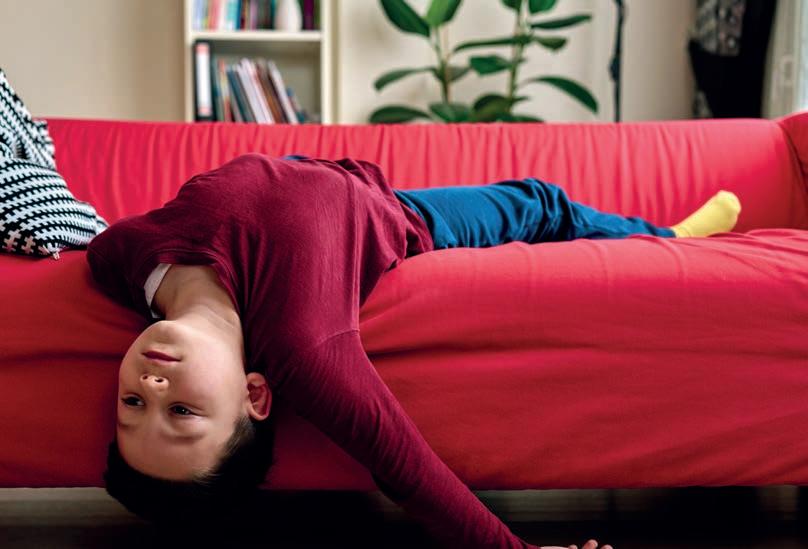
of deployment for coaches working with children in schools and communities. Organisations need to invest in the right training for their people and we also need to educate schools and parents so they understand the importance of this as well as making decisions based on quality as opposed to cost.”
CIMSPA and Aspire Active Partnerships will also work together to improve leadership in the youth activity sector.
“A lot of the people started out as sports coaches and stumbled into becoming a business owner. Apart from us, there’s nothing out there to support them and their organisations. Working with CIMSPA we aim to create more and better leaders and if we can do that we will have greater impact as a sector.
“I love the fact that CIMSPA is committed to positively progressing the sector and I’m very excited about what the future holds for us both.”
● Maths on the Move – aligned with the national curriculum, MOTM uses physically active learning, MOTM enhances children’s confidence and attainment in maths
● English on the Move – a physically active learning programme, which combines physical activity with spelling, punctuation and grammar teaching, aligned to the National Curriculum
● PE Curriculum Support – an Association for Physical Education Professional Development Board recognised programme that empowers teachers to raise the standards of primary school PE
● Playground activators – a Sports Leaders UK accredited training programme which up-skills the primary school workforce to help engage more children in physical activity during the school day.
We shine a spotlight on some of the inspiring partnerships operators have established with the health sector to deliver successful programmes with positive outcomes for local communities
Not-for-profit, social enterprise Abbeycroft Leisure has been commissioned by West Suffolk NHS Foundation Trust via their partnership with West Suffolk Council to alleviate acute pressures in the local health service. Suffolk’s largest independent health and fitness provider delivers two referral programmes which specifically address frailty and pulmonary rehabilitation through physical activity. Initially commissioned to deliver the schemes for one year in 2021, Abbeycroft has secured additional funding from West Suffolk NHS Foundation Trust for an additional two years of delivery.
Users are entitled up to 24 weeks’ access to the free schemes, which have so far benefited 2,000 people. Their user evaluation data reports that 50% of clients are more active after the programme and 60% experience improved wellbeing. The forecast is to work with 3,600 patients a year going forward.
“It’s important that these pathways remain free of charge. Our health partners would struggle to refer people on to the programmes if there was a cost associated with them. They believe in a free service and don’t want to create any barriers that could prevent people from using the service,” explains Warren Smyth, CEO of Abbeycroft Leisure.
“We used to find it hard to recruit
people for our referral system, but not anymore. We now receive referrals from hospital clinicians, GPs, social prescribers, musculoskeletal physios and community health workers.”
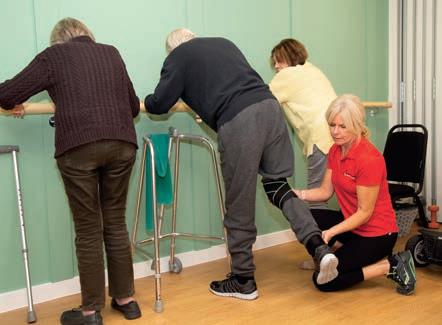
These are just two of the many programmes that form part of Abbeycroft’s award-winning Active Living exercise referral scheme. Others include cancer support, falls prevention, cardiac rehabilitation and more. The success of the programmes is due to the strength of the partnership Abbeycroft has with West Suffolk Council and its local health partners.
“Some years ago, we decided to change our strategic approach to work with health partners at every level. It’s all about developing relationships. When I first met with local health leaders they thought I was going to try and sell them a gym membership, rather than support them with our infrastructure, workforce and knowledge,” says Warren.
It takes considerable time and effort to make it work, he says, and having bought into working with health partners at a strategic level, Abbeycroft has committed as much resource to this area of the business as others. One full time director and manager work in the health system and the organisation also has a team of eight health and wellbeing coaches delivering 20-37 hours a week.
“You can only be deemed credible if you have credible colleagues in the room. We’ve upskilled our staff and at the same time have created a new career pathway. The traditional route off the gym floor is to become a PT. We’ve broadened the opportunities for our staff, some of which have even gone on to work in the health system.
“With continued support, we hope that the programme will continue to expand to include more conditions, which in turn will help us to help more people and alleviate pressures on the NHS.”
“It’s important that these pathways remain free of charge. Our health partners would struggle to refer people on to the programmes if there was a cost associated with them”
Warren Smyth , CEO of Abbeycroft Leisure
In November 2022, Prehab4Cancer won a prestigious Health Service Journal (HSJ) Award for Partnership of the Year. The award recognised the truly collaborative approach between GM Active and GM Cancer Alliance to improve cancer outcomes across Greater Manchester. As the UK’s first systemwide prehabilitation and recovery programme for cancer patients, Prehab4Cancer is a worthy winner.
Since launching in April 2019, Prehab4Cancer has supported more than 3,000 people in preparing for the physiological and psychological challenges of cancer treatments. The free exercise, nutrition and wellbeing scheme is run by a team of NHS professionals and exercise specialists and is delivered through leisure centres across Greater Manchester.


Prehab4Cancer is designed to help people take an active role in their cancer care and live as well as possible with and beyond cancer. The product of co-design and close collaboration between health and leisure, the programme is eligible for people aged over 18 with colorectal cancer, lung cancer and upper gastrointestinal cancer.
“Patients are referred
to the scheme very early in their cancer pathway, often just days after diagnosis. They receive a holistic assessment with an exercise specialist who provides tailored exercise, nutrition and wellbeing support,” explains Kirsty Rowlinson-Groves, programme manager and specialist exercise instructor with 10 years’ experience working with patients with long-term health conditions.
“The programme runs for three to 12 months depending on the patient’s pathway. They are assessed at point of entry, before surgery or treatment, and afterwards to start rehab They also receive a discharge assessment after 12 weeks of targeted rehabilitation. Patients are placed on a universal pathway or a targeted arm based on the results of the assessment. They can use any of the 80+ leisure centres across Greater Manchester.”
Leisure operators can’t and shouldn’t run these programmes in isolation, she says, they need a clinical champion to support and lead the programme. The key to the success of Prehab4Cancer is that it is clinically led and follows the evidence-based practice approach.
University NHS Foundation Trust.
“Dr Moore is a personal advocate of physical activity and brought the clinical teams to the table. We as the leisure providers had to meet the rigour of NHS standards with regards to our skills, experience, education and CPD. We presented across the clinical teams to demonstrate that we are exercise professionals with suitable qualifications to work with their patients safely and effectively,” she explains.
To date, Prehab4Cancer has received over 4,000 referrals, an average of 120 a month, and enjoys a 78% engagement rate. There are currently 1,000 patients working through the programme.
The benefits of the programme range from improved mood, fewer side effects during treatment and faster, less complicated recovery after surgery. An independent evaluation found that Prehab4Cancer patients are discharged from hospital earlier than non-users of the service resulting in huge cost saving for the NHS.
Since
in April 2019,
Prehab4Cancer has incredible clinical support from across the system. Its clinical director is Dr John Moore, clinical head of division for anaesthesia, peri-operative medicine and critical care services at Central Manchester
“It’s an incredible programme to be part of. Our focus now is scaling it up to other tumour groups and we are launching an advanced pathway for people with stage III & IV lung cancer offered active treatment. We know that quality of life is better for longer on managed treatments for someone who is active. We’re also looking at how the model can be applied to other conditions and potentially into a preventative pathway.”
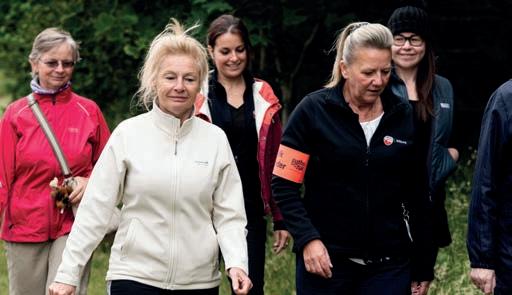
A new approach to health and wellbeing in North Ayrshire may prove to be the blueprint for the future delivery outlook of public provision across the UK resulting in lasting change for leisure trusts.
KA Leisure is poised as the delivery agency for the health and wellbeing of the whole of North Ayrshire – that’s some 120,000 residents.
North Ayrshire Community Planning Partnership developed a Local Outcomes Improvement Plan (LOIP) for 2022-2030, which sets out how local public services will work with communities, third sector organisations and businesses to tackle inequalities and deliver long term social and health outcomes.
“Everyone talks about the importance of collaboration, but the reality is that even if you can get multiple agencies into one room, they inevitably focus on their own priorities and revert to working in silos. We have adopted a true whole systems approach with key
agencies working together to achieve the same goals and outcomes under one clear banner ‘Stronger Together’. This federal approach has never been done before in the UK with the leisure trust placed at the heart of it,” says Malcolm McPhail, interim CEO of KA Leisure.
These agencies include North Ayrshire Council, Sport Scotland, NHS Ayrshire & Arran, the local police and fire service as well as health and social care services, education and skills development partners. The strategic plans of all agencies are aligned to the LOIP and the work will be delivered via three pillars – work, world and wellbeing. KA Leisure
will deliver the wellbeing agenda with McPhail chairing the board of the new Wellbeing Alliance Steering Group.
The wellbeing remit is vast. It includes reducing loneliness and social isolation, improving access to facilities, addressing drug and alcohol use, reducing incidents of falls, increasing civic pride and making young people feel valued and heard.
“Focusing on improving the health and wellbeing of everyone in North Ayrshire, rather than just offering sport and fitness, will transform the way we deliver our programmes and services. It will change the way our centres look and feel, the language we use and the way we engage with users,” McPhail explains.
Leisure centres will become health and wellbeing hubs running health programmes via activity, arts and culture for a person-centred holistic approach to delivery. In many instances this will mean adopting a place-centred approach and working in local neighbourhoods alongside the centres.
Strategic planning will focus on plugging the gaps in provision as well as eliminating overlaps, while the new whole systems approach will create greater financial and social value efficiencies, he says.
“The plan is to make the Wellbeing Alliance a household name for early intervention care in North Ayrshire. A core programme of wellbeing will be developed that will be available 365 days a year which can be accessed by local people via social prescription agency referral or self-referral.”
Following nine months of planning, the first programmed activities are anticipated to get underway in April 2023.
“I’m very proud to be working with some of the most caring and capable colleagues I have ever worked with in my career. I have a huge amount of confidence that we will achieve this highly ambitious vision.”
“I’m very proud to be working with some of the most caring and capable colleagues I have ever worked with in my career”
Malcolm McPhail , Interim CEO of KA Leisure
Leisure operators offering exercise on referral (EOR) can now have the quality and effectiveness of their schemes validated by Sport England’s Improvement Tool, Quest.
The new exercise referral standard assessment can be taken standalone or as part of Sport England’s Quest assessment process, which is designed to help facilities strengthen their core operational standards, as well as demonstrate the positive impact they have on their local communities.
The quality standard for exercise referral assessment was originally developed pre-Covid by Right Directions in partnership with Suffolk Public Health, who had, in collaboration with exercise referral scheme leaders, health professionals and other key stakeholders across the county, provided a set of locally tailored operating standards for exercise referral schemes.
The first of its kind in the UK, it was developed to reassure GPs and health professionals that they can refer in the knowledge accredited facilities are successfully delivering programmes that have been rigorously tested using ‘real-world’ criteria. Following a successful two-and-half-year pilot, the standard has been adapted into a
module for Sport England’s Quest.
Phil Lown is a senior Quest assessor at Right Directions, which manages Quest on behalf of Sport England as part of Moving Communities.
“The exercise referral standard will allow facilities running EOR schemes to challenge and check the suitability of the programmes they are running and analyse how they are using funding to demonstrate clear patient outputs. This
‘rubber stamp’ should also give operators the confidence to apply for further funding,” he said.
“Health professionals will no longer need to find solutions to embed exercise themselves; they can simply refer patients living with a condition that would benefit from physical activity to facilities that have achieved the standard, reassured they will receive a high standard of care and a structured

exercise programme delivered in a safe environment.”
The standard aims to ensure exercise referral schemes are operating in line with the 2014 National Institute for Health and Care Excellence (NICE) guidelines for exercise referral and behaviour change, and that pathways are in place for exercise referral aligned to evidence-based principles and best practice guidelines; as well as local health and wellbeing priorities.
“The standard isn’t limited to those offering exercise referral in a leisure centre,” explains Lown. “It’s ideal for small, specialist community teams and exercise referral-specific projects, as well as specialist exercise referral teams who operate as independent teams within the community or within a leisure facility setting.”
The assessment can be carried out as a stand-alone accreditation or on day two as part of Quest Plus at no extra cost and covers all elements of exercise referral across four key areas: scheme safety, scheme delivery (including governance), information sharing and scheme monitoring and evaluation.
It includes observation of a practical exercise referral session, which could be anything from a specialist programme review or initial consultation to an exercise class, group gym session or induction.
Lown concludes: “Achieving this exercise referral stamp of approval will help facilities grow their programmes by facilitating understanding of local referral processes, strengthening the local evidence-based on the effectiveness of schemes and therefore their case for accessing funding streams.
“Ultimately, it should ensure residents receive high-quality exercise programmes tailored to their needs, and make it easier for healthcare professionals to engage with schemes and for individuals to participate.”
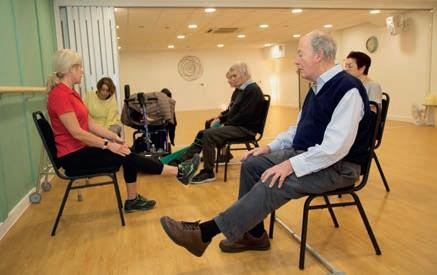
MATTHEW HICKEY IS HEALTH AND WELLBEING MANAGER AT ABBEYCROFT LEISURE AND WAS INVOLVED IN THE ORIGINAL DEVELOPMENT OF THE QUALITY STANDARD.
“We’ve had programmes running for 12 years now. They were originally self-funded by the client and some GPs and community teams were happy to refer into a paid service,” he said.
“However, the introduction of the standard has really joined the dots; providing us with the structure and credibility to move forward at pace. We now offer funded patient pathways, supported by Suffolk County Council Public Health, West Suffolk NHS Foundation Trust, West Suffolk Council and the wider West Suffolk Alliance – all the local health bodies working together to support our work, simply because we are now a trusted partner.
“We use the exercise referral standard and Refer-All’s software to demonstrate the outcomes of our Active Living programmes, which run across seven localities, and we have secured an additional two years of funding. Plus, now our foot is in the door, we can keep it open, as we’re front and centre of partners’ thinking when it comes to anything else. We’re having new conversations every week and have received further funding for long Covid support and working with MacMillan on cancer programmes.
“Due to Abbeycroft Leisure’s growth in recent years, we now manage 12 centres on behalf of our local council partners and we’re able to use the standard as a base point to externally assess and align all exercise on referral programmes across our portfolio. From the evaluation and feedback, we can understand why one element scores an ‘excellent’ and another only ‘good’, recognise where there are gaps in knowledge and create a structure to put any necessary changes into place, continually testing what we are doing to ensure it’s still working effectively.”
When it comes to grand designs, Exeter City Council has moved the eco-bar to another level. Not only has it built the UK’s first ultra-energy efficient Passivhaus leisure centre, but it also created a landmark building on a prime site in the city centre.


The local authority’s timing couldn’t be better either with global energy prices reaching record highs. As the country’s most eco-friendly leisure centre, energy bills should be a fraction of a conventional one of a similar size. The flagship project is also designed to be climate resistant to 2080 and incorporate healthy ‘building biology’ principles.
The ambitious and striking St Sidwell’s Point has already won prizes, including a national RICS award 2022.

(The Royal Institution of Chartered Surveyors







With their eco-friendly credentials and lower running costs, Passivhaus climate-resistant buildings are becoming more and more popular
is a global professional body for standards in land, property, infrastructure and construction.)















So, it’s a shame Exeter City Council declined to comment on the centre’s actual energy performance since opening last April, with a spokesman

saying: “I’m really sorry but a lot of time is being spent on budgetary issues at the moment and these are quite in-depth questions that need specialist officers to answer.”

Among the questions asked by S&PA Professional was whether the centre is on track to make the anticipated 50-70% energy savings due to its Passivhaus design


and the total cost of the scheme.
Earlier this year, it emerged costs for the mammoth project, which began in 2019 and was initially due to open in 2021, had risen to £44m – possibly more. The original budget was £32m –a 37% hike.
Exeter City Council leader Cllr Philip Bialyk explained: “It was £32m at the start but we wanted bigger and better with extra stations in the gym and other stuff. We agreed those costs in a final fixed building contract in 2018.”
St Sidwell’s Point then faced Covid-related delays and expenses, including difficulty sourcing some building materials and labour. The final bill has not yet been revealed. A report is expected to be presented to the council at the end of the financial year in April.







There’s no getting away from the fact that Passivhaus buildings are more expensive to build than conventional ones. Each one is virtually airtight and built to

exacting, internationally recognised standards, which typically means very high insulation levels, triple glazing and no thermal bridges – weak points in the building envelope that allow heat to escape. But with their eco-friendly credentials and lower running costs, it’s no surprise Passivhaus buildings are becoming more and more popular. Examples include houses, schools, university buildings and offices. St Sidwell’s Point is making a splash because it’s the first Passivhaus leisure centre outside of Germany, where there are two pools.
It was a brave step by Exeter City Council to pioneer the UK’s first leisure centre built to Passivhaus standards, especially as it’s bigger than the German pools, in the cities of Lünen
and Bamberg. St Sidwell’s Point has three pools (a 25m family pool, a 20m learner pool and splash pool) plus the added complication of a 150-station gym, exercise studios, spin studio, health suite and spa. It is, say the architects, “the world’s first multi-zonal Passivhaus leisure centre”.
The cost of gas and electricity has rocketed recently but conventional leisure centres guzzle energy. It’s not just the water in the pools that needs heating to 30° C but also the pool halls and changing rooms to a similar temperature, so swimmers don’t feel cold when they leave the water. And there is a high demand for hot water from showers before and after each session. Meanwhile other areas, like the gym, require cooling.

Client: Exeter City Council
Architects: Space and Place
Passivhaus designer, building envelope architect, Building Biology consultant: Gale & Snowdon
Main contractor: Kier
Structural, mechanical, electrical and civil engineering: Arup
Pool filtration specialist: FT Leisure
Passivhaus standards – unlike building regulations – regulate all energy use in a building, which means all these different demands need to be carefully considered and reduced to a minimum. The total primary energy demand for a conventional leisure centre – space heating, hot water, cooling, ventilation, electrical loads and lighting – is 1,579kWh/m2 per year, according to the Passivhaus Trust, an independent body promoting the methodology. Current good practice is 737kWh/m2 per year. For Passivhaus accreditation, St Sidwell’s Point leisure centre energy target is 375kWh/m2 per year.
The centre passed the initial airtightness tests, but isn’t yet officially Passivhaus certified, a process involving independent monitoring. Certification is “imminent” said David Gale, architect and director of Gale and Snowden, Passivhaus specialist, who was involved from the start.
That significance of the low-energy building isn’t lost on the Passivhaus Trust. Sarah Lewis, research and policy director, said: “St Sidwell’s Point is a fantastic beacon to the construction industry, illustrating that Passivhaus can be applied to any building typology and can work for large and complex buildings. We take our hats off to the

project team and to Exeter City Council for their vision in delivering the project. With energy bills soaring, Passivhaus buildings, including leisure centres, make total sense.”

Labour-controlled Exeter City Council has been building – and retrofitting – council homes to Passivhaus standards since 2010. In addition to reducing heating bills for occupants, wider aims included cutting carbon emissions for the city to become net zero by 2030. Gale’s practice organised workshops and presentations for officers and councillors. The eco-design expert said: “We have been
taking Exeter City Council on a journey from low energy to Passivhaus. It was a joint discussion between us and Exeter City Council to go Passivhaus for St Sidwell’s Point.
“We were very excited to be involved from the project’s inception back in 2011 and to have had such a major impact on setting the standards and in the design and delivery of the building with the rest of the project team.”
Exeter City Council wanted a prestigious anchor building for the wider redevelopment of the rest of
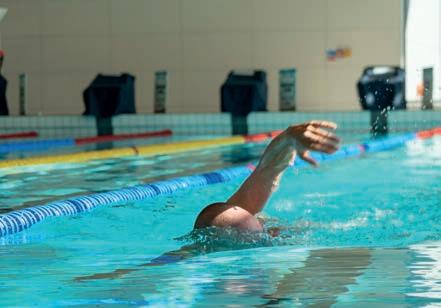
the site. And the design by leisure centre specialist Space & Place working alongside Gale & Snowden as Passivhaus consultants, doesn’t disappoint. Unlike some box-like Passivhaus projects with small north-facing windows, St Sidwell’s Point has curves instead of corners and extensive south-facing glazing in the pool hall. In fact, the design made achieving rigorous Passivhaus standards more challenging.
Gale said: “The site in Exeter city centre was very compact with level changes, and required all the space to be used. The building naturally took on the curved shapes that the site provided. It is also a statement there is no restriction on creativity when it comes to designing to Passivhaus standard.”
A passive building is designed to use minimal energy. Commenting on St Sidwell’s Point, Bialyk said: “We haven’t put the [space] heating on yet. The lifetime of the building is 80-years plus, so the energy savings will be immense – far greater than we ever expected.” Before the current crisis, Exeter council anticipated savings on utility bills would offset the added costs of the high-quality building fabric within a decade.
When designing St Sidwell’s Point, Gale & Snowden split the building into thermal zones. Hot zones like the pools at 30°C to the south with large windows to harvest solar gain, and areas requiring cooling at 16°C to the north divided by an internal thermal buffer to reduce heat loss.

Clever touches include diverting human-powered energy from people working out in the gym and spinning studio into heating the pool and other parts of the building via hybrid heating and cooling air-source heat pumps instead of cooling the air in a conventional way. There are back-up gas boilers if required.
Heat loss from swimming pools is closely linked to evaporation rates. Not only does it cool the water down, but replacement water is needed, which requires heating. With good building fabric performance, say the designers, the risk of internal condensation is reduced. This means the pool can operate at a slightly higher

“The lifetime of the building is 80-years plus, so the energy savings will be immense”
humidity of 64% compared to the standard 50-60%.
With less risk of condensation in the pool hall, ventilation air change rates can also be reduced, saving more energy. Benefits of achieving sustainability outcomes, include a “healthy, uplifting and comfortable indoor environment”, says Gale and Snowdon.

For example, there is minimal chlorine content in the pool, reducing the risk of asthma and red eye. St Sidwell’s Point is the first public leisure centre in the UK to use a process called ‘microfiltration’, where pool water is forced through a ceramic membrane "
which filters to a finer grade than conventional systems. The innovative filtration process coupled with ultra-violet (UV) light treatment means little chlorine disinfection is needed.
The architects also chose natural, non-toxic building materials and finishes where possible to reduce the risk of off-gassing and VOCs (volatile organic compounds). “It’s important in the design and operation of building to consider the health of the building occupants. The science of Building Biology is about optimising building for human health and the health of the planet,” said Gale.
Other councils have already dived
Definition: A standard utilising various principles of insulation, passive solar climate control and low-energy construction methods to create buildings that require very little in the way of fuel or electricity inputs to meet heating and cooling needs.
The five principles of Passivhaus, or passive house, design:
● No thermal bridging
● Superior windows
● Mechanical ventilation with heat recovery
● Quality insulation
● Airtight construction
into Passivhaus depths. Surrey’s Spelthorne leisure centre is currently under construction – and costs have spiralled. When councillors first approved the project, just 17 months ago, the cost was £30m. Now that building work has started the cost is put at £43.5m – a 45% hike. Civic chiefs have blamed inflationary pressures. The centre will have four rooftop 3G pitches, three pools, sports hall, 200-station gym and studio space. In Scotland, Perth & Kinross Council has plans in the pipeline for a £90m Passivhaus swimming pool and ice rink.
Clearly building a high-spec leisure centre to Passivhaus standards does come at a cost. But Exeter city council chief Bialyk has no regrets. “Exeter is a strong city,” he said. “Some councils are closing pools, but we have done the reverse. It sounds like a lot of money at the start but eventually it will come good. We have future-proofed St Sidwell’s Point for future generations.”



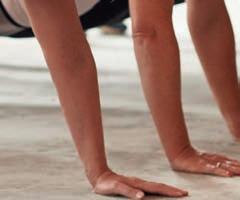
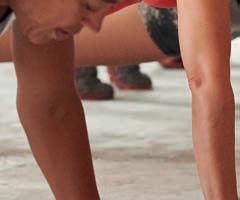






The menopause, and other midlife pressures, mean many women drop out of physical activity just when they need it most. How can fitness providers keep them engaged?



The onset of the menopause can bring many challenges for women when it comes to staying active: aching joints, tiredness from disturbed sleep, sudden hot flushes or the fear of losing bladder control when the instructor asks for some star jumps, to name but a few. Although some sail through this period of change with few problems, figures from the British Menopause Society show that for around three quarters of women, fluctuating hormone levels produce a range of troublesome symptoms that can persist for as long as seven years.


‘Menopause, Me and Physical Activity’, a report by the charity Women in Sport, found that activity levels declined significantly in almost a third of women in this life stage. And the physical symptoms are compounded by other factors. The trend towards later motherhood and the fact that people are living longer has resulted in a sandwich generation of mid-life women who are likely to have pre-teen children and elderly parents needing more support at the same time. What’s more, by middle age many women will have reached senior positions at work that are likely to come with added hours and stress.
There’s always been a stigma and lack of public awareness around menopause and it’s only in the last couple of years that the topic has been discussed more openly, with celebrities such as TV presenter Davina McCall sharing their own stories. Many women remain

unprepared for its onset, says group exercise instructor and CIMSPA member, Julie Robinson, founder of MenoHealth, which provides exercise classes and menopause support.


“Women often don’t understand what’s happening when the hormone roller coaster starts,” she explains. “High levels of the stress hormone cortisol can cause weight gain and this impacts on self-esteem and body confidence. You don’t feel like yourself anymore. Women are often really shocked by joint pains and think it’s the onset of arthritis, so they stop moving, making it worse. With the right support, they could stay active at the time when they really need to.”
The decline in levels of the reproductive hormone oestrogen also leaves women more at risk of conditions such as cardiovascular disease, osteoporosis, obesity and Type 2 diabetes following the menopause. Regular aerobic and weight-bearing exercise plays an important role in maintaining a healthy weight and building bone and muscle mass.
So how can sports and physical activity providers better engage with this demographic? Follow-up research by Women in Sport has found that many women in midlife want to be more active but are unsure how to go about it and have a narrow view of what exercise and sport can be. It’s therefore up to providers to encourage them to try activities they may not have previously considered, highlight beginner-friendly sessions and provide a social element
It’s still early days when it comes to raising awareness and many women going through the menopause are likely to feel labelled by classes aimed explicitly at them, especially when delivered in a general exercise setting. But there are easy ways fitness professionals can adapt sessions and classes to ensure they’re inclusive.
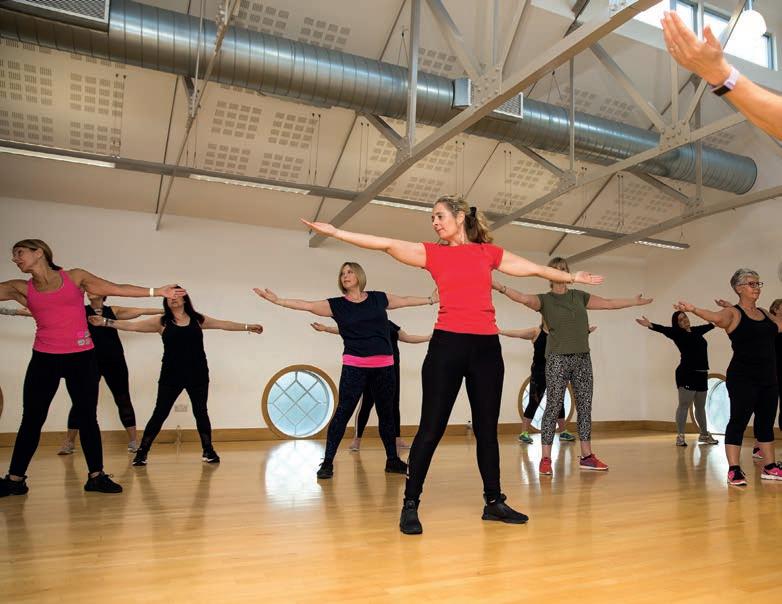
are easy ways ofessionals can sions and ensure clusive.
● Make it clear that anyone can pop outside for a break if they need to, or can move to be nearer the window or air conditioning if they feel too hot.



● Offer simpler versions of step sequences and movements for participants who might be experiencing the brain fog and concentration problems that can be associated with menopause. Make it clear that it’s getting moving, rather than getting all the steps right, that’s important.
Dial down the intensity and offer encouragement to keep them moving and motivated.
Robinson is putting together a menopause CPD training package aimed at all fitness professionals and mapped to CIMSPA’s ‘Working with women and girls’ professional standards to be released in early 2023. Find out more at menohealth.co.uk/CPD.
Julie Robinson of MenoHealth gives her top tips.
nson th gives ps .
● Demonstrate alternative, lower impact versions of exercises that participants can choose if they are experiencing joint pain or are worried they won’t be able to keep up.
exercises participant choose if experie or worrie b u
● Learn to discuss the pelvic floor as you would any other muscle group, and explain how to work it and strengthen it. Make this an integral part of corestrengthening sessions, as it often is in Pilates.
● Be aware that personal training clients or regular class participants can experience a drop in form due to menopause symptoms.
Other CPD offered by CIMSPA education partners includes:
● Exercise Strategy for Perimenopause to Post Menopause, available from Fitpro.com
● 3rd Age Woman online certification, available from Burrelleducation.com.
with opportunities that incentivise friends to get active together.
It’s vital that marketing materials feature images of mid-life women and tell the stories of relatable role models who’ve found something they really love and made time for it, says Women in Sport’s head of policy, partnerships and public affairs Lisa West. Good examples include campaigns such as the charity’s #TimeTogether, which encourages women in midlife and their daughters to use physical activity to build relationships, and This Girl Can. It’s also important to emphasise specific and immediate wellbeing benefits rather longer-term goals such as weight loss.
“One the biggest problems women mention is disrupted sleep; we know exercise benefits sleep so that’s one thing
Strictly speaking, the ‘menopause’ refers to the final menstrual period. The average age for this is 51.
‘Perimenopause’ refers to the transition years leading up to the menopause, when levels of the reproductive hormone, oestrogen, fluctuate and begin to fall. This often begins in the mid-40s, although it can start earlier or later.
There are over 30 recognised symptoms associated with the perimenopause and menopause. These arise as the body adapts to the loss of oestrogen and can include hot flushes and sweats, anxiety and depression, fatigue, insomnia, brain fog and memory lapses, weight gain, urinary problems, palpitations, and painful joints and muscles. The latter is due to the loss of the antiinflammatory effects of oestrogen.
Many women choose to take hormone replacement therapy (HRT) if symptoms are severe. But lifestyle changes, including regular exercise, can also help alleviate symptoms.
to focus on,” says West. “We can also talk about how exercise releases endorphins and makes you feel good, which can improve mood and anxiety. Those things are often more valuable to women going through menopause than saying it will make them healthy.”
For organisations thinking about addressing the needs of menopausal women, staff programmes are a good place to start. At CIMSPA partner Edinburgh Leisure, the fledgling Menopause Matters initiative forms part of the more general staff wellbeing programme. “The purpose is to
encourage people to feel comfortable talking about the menopause, raise awareness of symptoms and put the right support in place for those impacted,” explains Helen Macfarlane, director of wellbeing at Edinburgh Leisure.

The first step was a consultation with staff to gain insight into their personal experiences and needs, and a focus group in November attracted 15 colleagues. “We were delighted to have participants from across the organisation, including café staff, coaches, managers and head office staff. There was a huge amount of energy and commitment to provide more support around the menopause, such as with staff education and training, signposting to resources, awareness events, menopause buddies and launching a Menopause Policy.
“There’s so much great information out there. We’ve researched, attended conferences and online events, read books, downloaded apps, and followed experts and influencers on social media. Some key things I’ve taken from this are the importance of consulting with staff, bringing our leaders along with us and learning from others. It’s ok to start small and let it snowball from there.”
Robinson hopes that menopause programmes will gain the same traction as those centred around mental health have done in recent years. “If you look back at the journey with mental health, once no one was talking about it; now there’s so much more awareness and we have mental health first aiders in many organisations. Given that half the population are going to go through menopause, it’s something we need to address,” she explains.
“My dream is to educate fitness professionals so that everyone becomes a menopause champion. It’s about recognising the symptoms, being able to talk about it without embarrassment and having some resources to hand.”
People with disabilities are still underrepresented in the sector’s workforce. We look at how some organisations are upping their game when it comes to recruitment and retention
One in five of the working age population is classed as having a disability, and government statistics show that only around half of those affected are in employment, compared to around 80% of non-disabled people.
It has always been particularly difficult for people with disabilities to enter the physical activity industry but the last
decade or so has seen efforts to tackle the issue. The InstructAbility project, funded by Sport England and managed by the charity Aspire, has been offering fitness instructor training and work placements to people with disabilities since 2010 and several hundred have qualified through the scheme. March 2022 saw the publication of three EmployAbility Leisure guides, one designed to
By Caroline Roberts“It’s very interesting that out of a workforce of 483 staff, only four are registered as disabled”
Corrine Samaras , HR executive
inspire disabled people to consider working in the sector, and the others to give employers and training providers a toolkit to support inclusion.
Since the launch of the guides, Aspire has run a series of follow-up workshops for organisations, prompting some to take a closer look at their inclusion and diversity practices, supported by the charity. One of these is South Downs Leisure, a CIMSPA employer partner that runs eight leisure centres across East and West Sussex.
The operator already has Disability Confident status as part of a government scheme to improve recruitment and retention of disabled people, and it has previously tapped into the government funding source, Access to Work, to support an apprentice with a hearing impairment. But, says human resources executive Corrine Samaras: “We realised we don’t talk about being Disability Confident enough – so many staff members don’t know about it or what it means.” Following a self-assessment day in July, the organisation created a Disability Action Plan. “It's encouraged us to stop and think differently about how we recruit and how we ensure we’re developing disabled people as well as the rest of our workforce.”
Planned actions include reaching more potential employees through links with disability charities and other local support groups, and ensuring managers are primed to discuss things such as flexible working and role adjustments as part of the recruitment process. The organisation is also carrying out a detailed accessibility audit of all centres. “We’re doing very practical things, such as an employee bringing in her daughter, who’s a wheelchair user, to go round and take note of things that need to be changed,” says Samaras. Another focus is trying to encourage
Average pay gap across all disability types is 12.2%
existing employees to be more open about their disabilities, which they can declare through a confidential staff portal, she adds. Research has consistently found that employees are often reluctant to divulge disabilities and health conditions for fear it will affect their career prospects, and government figures show that that those with disabilities are lower paid and less likely to progress in their careers – the average pay gap across all disability types is 12.2%.
“It’s very interesting that out of a workforce of 483 staff, only four are registered as disabled,” adds Samaras. “People have impairments that aren’t immediately visible and it’s about empowering them to have the confidence to declare them so they can get the appropriate support.”
Future Fit, a CIMSPA training provider partner, is another organisation taking a deep dive into its practices around disability. “We’ve recently noticed an increased number of learners needing support so we approached Aspire for help,” says group operations director Tom Godwin.
“We know we already meet
accessibility standards, but we wanted to get some impartial advice about what we could be doing better, how we can make our learning more accessible, and how we can put in reasonable adjustments that are more geared to the individual.”
Employees from across the organisation have been involved in the discussion, but it has been very much focused on the grassroots. Surprisingly, senior leadership had been shut out of the conversation.
“We wanted a forum where people who deal with our learners could have an open and honest conversation about what they think we could be doing better on a person-to-person level rather than a strategic level,” adds Godwin.
The organisation is now working through a set of recommendations put together by the team. “One of the key actions we are focusing on is making sure our website is fully accessible to a wider range of abilities and our learning is following current best practice. We’re trying to get our teams to really focus on
Godwin , group operations director at Future Fit
“We want to work on showcasing the sector as an exciting place to be for people with all sorts of disabilities”
Tom
the end user. It’s little things like all our photos had alternative text but it often wasn’t descriptive enough. We realised it needed to form part of the story that we want someone with a visual impairment to pull out of the material.
“Also, we want to work on how we
Rojimon Cherian was working in a restaurant kitchen when surgery for a brain tumour left him with a severe visual impairment. After training through the InstructAbility scheme, he has built a fulfilling career in the fitness industry.
For the last six years, he has been a full-time fitness instructor at Better’s Parkside Leisure Centre in Cambridge where he delivers a wide range of classes, including BoxFit, HIIT and circuits, as well as carrying out induction and refocus sessions for both able-bodied clients and those with disabilities.
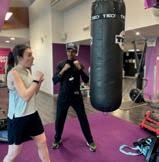
“It was very difficult when I started but I gradually adapted to my surroundings and got to know the layout of the studio and where all the equipment is,” he says.
Cherian believes that many employers are reluctant to take a risk on someone like him, but management and colleagues at Parkside have been abidingly helpful. And he always ensures clients know to put
showcase the sector as an exciting place to be for people with all sorts of disabilities and challenges. We want to make sure that, when someone with a disability calls our career advisers, they have all these great case studies to hand of people who’ve done it and can link
equipment back in its place, so it doesn’t present a hazard. “For some of them it comes as a big surprise as they don’t realise I’m almost blind.”
He now holds a Level 4 BTEC in Sports & Leisure, is doing part-time course in sports massage therapy and is planning to gain a qualification in GP referral. “I’m getting more and more knowledge, and that’s good for me and good for my clients. It’s very rewarding to see them getting stronger and stronger every day, physically and mentally. The differently-abled ones often say that, without me, they’d just be sitting at home watching TV.
“There needs to be more opportunities. If I can do it, other people definitely can too. Now, I don’t worry about my eyesight anymore. I’m very happy because I have my career, I can support my family and my community respects me.”
Lee Welch has spina bifida and is a wheelchair user. He entered the industry via the InstructAbility programme in 2014 and undertook a work placement at Everyone Active’s Hartham Leisure Centre in Hertford.
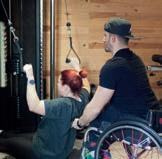
“Hartham didn’t let any barriers get in the way, and all the staff there welcomed me,” he says. He still works on the gym
people up with other organisations that can provide extra support. It’s about getting that message out there.”
floor at the centre twice a week as well as teaching a class for people with restricted mobility. The rest of the time, he focuses on his own PT business, Beyond Limits Health and Fitness, which he runs out of a gym he had built at home during lockdown.
As a PT, he can train between 25 and 35 clients a week, many of whom are able-bodied. Seeing what he has achieved is a source of inspiration for many, he says. “A lot of my clients like to work with me because of the journey I’ve been on. It’s almost like it makes them feel there are no excuses for them.” And having to constantly adapt due to his disability has had a positive influence on his training style and taught him to think outside the box, he adds. “When I train, I adapt things so that they work for me, and that’s something that feeds into my work with clients. It’s made me a more creative PT.”
The belief that employers need to be more open minded about the possibility of employing people with disabilities and marketing is one of the biggest things that needs to change, he says. “Something as simple as a picture of someone in a wheelchair doing a fitness instructor job would go a long way. They think if this guy can be in the industry and be successful at his job then why not?”
Download the EmployAbility Leisure Guides at instructability.org.uk
“For some of them it comes as a big surprise as they don’t realise I’m almost blind”

Sports boards need a more diverse and inclusive representation at the top of the organisation EXPANDING
In 2016, data gathered by Sport England revealed that men “overwhelmingly” dominated the boards of sport organisations.

“It presented a quite shocking picture,” recalls Phil Smith (right), director of partnerships at Sport England. “Overwhelmingly, sports boards were populated by men, by white men, by white middle-class men, by white middle-class men who were from relatively affluent backgrounds and men ‘of a certain age’ as well.
“Therefore, the sport industry was missing out on all of the wonderful, diverse experiences that the UK and England have to offer… These organisations, many of them national
sports bodies, are supposed to be for and to represent England in its entirety. And boards just weren’t doing that.”
In that same year, the Code for Sports Governance set out the levels of transparency, diversity & inclusion, accountability and integrity that are required from those organisations who seek –and are in receipt of – UK Government and National Lottery funding from UK Sport and/or Sport England. The code provided a reason for change and “a mechanism to make it easy for them to change, because that was something that was quite a climb”, Smith says.
And change has been underway,
supported by a partnership between Sport England and global headhunting firm Perrett Laver. Since that concerning data and the new code emerged seven years ago, the partnership has led to 51 highly skilled and diverse professionals taking on non-executive board roles with sporting organisations in England. And as 2023 begins, those 51 belong to a network of 285 highly skilled and diverse professionals, run through the partnership, which is available to be tapped for future such positions.
“That’s 285 people with an amazing variety of skills, expertise and experience in their own chosen
industry,” Smith says. “People that are working at a highly accomplished level in professional fields who have said they have the desire and the interest to get involved in a sports board.
“Of those 285, 51 have already been appointed into board roles, which is a terrific number from a standing start in 2016.”
Imogen Baird (below, inset) leads the sports practice at Perrett Laver, whose sport clients have included the England and Wales Cricket Board (ECB), the Football Association, the Invictus Games and the Yorkshire Cricket Club, among many other national governing bodies, teams, clubs, foundations and charities in the sports space, along with events and rightsholder spaces “across the sports landscape”.
Of the relationship with Sport England, Baird says: “We were delighted to secure the work.”
Explaining how it began, Baird says, Sport England “put out a call, recognising that there was an issue in the non-executive landscape. The boards at the non-executive level were really a quite starkly poor representation of all the protected characteristics, if you will, so a real lack of diversity. They [Sport England] wanted to combat that”.
The initial concept was to create a pool – now known as a network – of appropriate candidates who could be put forward when board vacancies arose at a sports organisation. Such candidates would likely not come from within the sports industry but be “interested in non-executive leadership roles in the space, who have the right credibility, the right skills, who come from a diverse background”, Baird says.
Having won the pitch, Perrett Laver reached out to potential candidates as well as to training providers, using existing connections and making new
ones, to begin establishing a solid platform for a network: “Training providers helped to create and deliver learning modules, which would guide candidates through the requirements and demands of serving on boards to ensure that the candidates fully understood the commitment they would be making.”
(Non-executive board roles typically are unpaid, with those filling the positions giving their time and expertise a fair few times per year. Sometimes, expenses such as travel are reimbursed, which can be appealing to candidates in view of the commitment they must make.)

Next, she continued: “We quite quickly started introducing ourselves, approaching national governing bodies and saying, ‘We want to know when you’ve got a vacancy going’. And there were a great few ‘early adopters’,” Baird says.
Soon, sports organisations were knocking on Perrett Laver’s doors, seeking their assistance in finding the
right candidates for their board vacancies. “We now give them [the organisation securing the board member] a bit of advisory support as well – what does the candidate pack look like? What does the sort of process they’re designing look like? Is it compelling? Is it inclusive? So, it’s quite a more holistic package of support now that we offer people,” Baird says.
For the candidates themselves, a stand-out benefit is the chance to network with each other, along with the opportunities to meet different organisations and be considered for board positions. Sport England’s Smith says: “They meet both on screen and in person occasionally [with each other] because of course their experiences are vastly useful to each other. We’ve learned quite a lot from listening to all the candidates. We’ve learned a lot about their experience of being in other industries, the barriers, the rejections that they’ve had, their motivations.”
But key to the candidates’ successful induction is cultural assimilation into not only the organisation they are joining,
but very likely into the sport industry itself – not an athlete’s culture, but the business of sport. “If you’re coming into the sport industry from outside, you’re not going to get it on Day 1,” Smith says. “And equally, you’re not going to be able to give your best board performance on Day 1. So there’s got to be some acceptance and understanding of this on the sport’s side. Yes, you’re recruiting fantastic individuals, but you’ve got to give them the chance to succeed.”
Smith continues: “I’ve never worked in another industry, but it must be the same anywhere else. You have to understand the language and the norms, the dos and don’ts, and learn the acronyms. This is a big deal, and it takes time. So we were acutely aware that bringing people in from outside the industry, as well as not being the historic demographic of people on the boards, this is an extra layer of induction and learning that people need.”
Much is at stake, Smith emphasises. “I’ve seen the odd occasion where a brilliant individual has come in from another industry. And because there’s
UK law specifies nine protected personal characteristics: age, disability, gender reassignment, marriage and civil partnership (in employment only), pregnancy and maternity, race, religion or belief, sex and sexual orientation.
been an assumption in the recruiting body that this person is just going to arrive fully formed and brilliant… they’ve almost spat them out [a candidate]. You bring a new person into the team who’s got a different perspective, different experience, you need to work with them to find the right relationship.
“You can’t put the onus and all the expectation on the incoming board member to get up to speed – you’ve got to help them, and you’ve got to listen to their concerns and observations about why your organisation is different or new.”

Smith points out that becoming part of this talent network doesn’t necessarily lead to a role quickly or at all: “There have to be vacancies, and many of the boards in sport have their vacancies in rotation, so the vacancies only come around every so often. But we’ve now got to a good place where when a sports body board is looking for a new recruit, their first port of call is now that pool of 285 people, not just because they’ve got diverse people… but you’ve got high quality people.”
Organisations wanting to diversify their boards also have barriers and
hurdles to overcome, many of them to do with timing.
Asked what organisations typically have trouble getting to grips with in a headhunting situation, Baird cites the recognition that “good recruitment does take time, and our really needing to interrogate the brief at the outset, not just ‘We need to fill this vacancy really quickly’. There’s real pressure, I think, to move quickly and to make changes quickly”.
2023 will see the Perrett Laver-Sport England partnership continue. “We’re really passionate about continuing the journey of the professionalisation of sports leadership,” Baird says.
Sport England’s Smith says the greatest success in diversifying boards until now has been improving gender balance to “somewhere approaching 45%, which has been fantastic” from the under 20% levels in the initiative’s early days. “Our next big focus is on other protected characteristics,” Smith says. “We’ve done a reasonable job on cultural diversity, where I think around 37% of the pool have culturally diverse backgrounds.
“We’ve got more work to do on those with disabilities, and that is our next big focus. We need more people who have got lived experience of disabilities. At last count, there are 25 people in the pool who have stated they have got a disability, which is just shy of 9%... in the recent census data for the population, those recording a disability is near 20%. Therefore, we’re a bit underrepresented.”
Closing out his comments, Smith acknowledges that “diversity in itself is not a solution for a poorly performing organisation”. Great skills are needed too, as is leadership.
“However skilled your individuals are,” Smith says, “whatever background they’re from, you’ve got to get the best out of them, and that needs leadership.”
“You can’t put the onus on the incoming board member to get up to speed – you’ve got to help them”
 BY SUE WEEKES
BY SUE WEEKES
The digital fitness platform Funxtion is partnering with CycleMasters, which offers direct-to-customer indoor virtual cycling experiences, to support gym operators in engaging and retaining members. Funxtion will offer CycleMasters’ scenic and studio cycling content to their customers as an optional add-on to its platform, which will enable gym operators to deliver customisable content to their members via the delivery devices of their choice, either a member app or in-gym streaming display. Both parties say they are committed to the belief that the future of fitness is in the “hyperpersonalised omnichannel member journey”. The partnership follows Funxtion securing €5.8m (£4.95m) in equity capital to invest in continued innovation for its customisable digital fitness softwareas-a-service platform, as well as internal development and international growth.
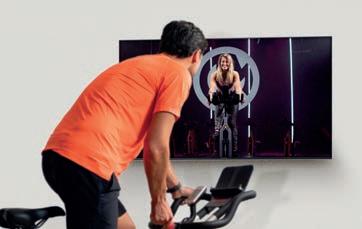
https://funxtion.com
Fisikal has developed a stand-alone, white label app that empowers gym owners to run and manage bespoke member acquisition promotions. The custom-branded app, which digitalises the administration associated with promotional work, can be downloaded by members free-of-charge from the Apple App or Google Play Stores and content then unlocked via a secure code by the respective gym operator. The user can then access details of the promotion. Central YMCA is one of the early adopters of the app for a 12 Days of Christmas promotion. Having accessed the promotion, users can answer some basic profiling questions and arrange a visit to the club and complete a tour. Once in the club, a QR code stored in the app verifies the user, grants access and logs the initial and any subsequent visits. The code remains active for the term of the promotion. The app also provides the operator with access to real-time data that will help them understand the popularity of the promotion and behaviour of those involved. www.fi sikal.com
UK manufacturer of power-assisted gym equipment Innerva has launched a community and support hub to help operators capitalise on the opportunities created by the UK’s ageing population. The My Innerva hub offers a range of resources to help health, fitness and rehabilitation professionals operate wellbeing spaces that meet the needs of older people and those with long-term health conditions. Features include the Knowledge Zone, providing the latest insight into exercise and older adults, and a forum, where those working with end-users can post questions, share advice and best practice from their peers. Innerva says that local leisure provision has traditionally underserved this demographic but believes by tailoring their equipment programmes and services for the ageing population, operators can tackle serious societal problems, including loneliness, mental and physical health. www.innerva.com

Garmin has updated the software on selected smartwatches and cycling computers, including the fēnix 7 series, epix (Gen 2), tactix 7, Enduro 2, Marq (Gen 2), Forerunner 255 series and the Forerunner 955 series. Smartwatch updates include: wrist-based running power metrics with no additional accessory required; a morning report, including sleep status; snowboard activity capabilities; and a dedicated disc golf activity feature. Notable new features of the cycling computers include: live event sharing, which allows riders to send updates to family and friends automatically, without lifting a finger; and spectator messaging, when the compatible cycling computer is paired with a compatible smartphone. Available initially for the Garmin 1040 series is a targeted adaptive coaching feature, which helps riders stay race-ready with training tips and daily suggested workouts. Plus, they can see the entire week of daily suggested workouts, which adapt to match performance, recovery and the demands of upcoming events in the Garmin Connect calendar. www.garmin.com


The Multi Activity Resource Station (MARS-2.0) has been revamped by Escape Fitness to provide gym members with access to instruction whenever they need it. The station is designed to break down the barriers to participation that can exist if individuals feel unsure or uncomfortable about using equipment safely and effectively. MARS 2.0 aims to provide “always on” equipment instruction and coaching via a large touchscreen and high-quality fitness content, ranging from individual exercise and
equipment demonstrations to full-on workouts. The entire Escape Fitness content library is available to all but with the option to switch content on and off to reflect the equipment provision in the gym. MARS 2.0 has been specifically designed to attach to an Octagon frame but it can also be freestanding. Escape Fitness says that as well as benefiting members, being able to access equipment demonstrations and pre-loaded programmes that focus on how to use the equipment gives the operator peace of mind that people can train safely. https://escapefi tness.com/
39 www.cimspa.co.uk
I
n October 2022, The Gym Group launched its new Inclusive Traineeship. An industry first, the traineeship is the result of a collaboration between The Gym Group and the Down’s Syndrome Association’s employment programme WorkFit. Jennagh Delaney, senior talent acquisition manager at The Gym Group, is leading the initiative.
I lead The Gym Group’s disability employee working group and the Inclusive Traineeship was created from the group’s commitment to promote a more inclusive gym environment for employees and members. It was a personal passion project for me as my younger brother has Down’s Syndrome and I wanted to show him and all those other brilliant people like him that there are opportunities for all and businesses who will champion you.
What does the programme involve?
In October, we welcomed five trainees on a 10-week programme at their local gyms. They are gaining valuable experience and time with regional gym teams and fitness experts,
while also undertaking a Level 1 Active IQ fitness qualification. With guidance from the Down’s Syndrome Association, we support these fantastic trainees with a meaningful work experience placement and they leave with a recognised qualification.
The feedback from our trainees and supporting gym teams has been brilliant. For example, Bella at our Farnborough gym said the traineeship has increased her confidence and that she has a better understanding of the benefits of good health and fitness. It’s wonderful to see them all grow in confidence and stand just that little bit taller with the pride that comes from personal achievement.
We have also had many people reach out to us from across the country supporting the work we are doing, as well as asking how they can support us further, which is great. It shows who we are as a business and what we are trying to stand for – it is something we truly champion. And, hopefully, an added benefit is that people will think of us when looking to find a new role or joining a gym.
It matters to us and our members to have a diverse gym environment –diversity of thought and representation means that we truly reflect the communities we serve. It brings opportunity, awareness and hope to all those who feel they might not belong and helps them find their space at The Gym Group. Inclusion is so important, and opportunities should be equal, and representation is how we all move forward to success.
Breaking down barriers to fitness was a founding principle of The Gym Group in 2008. We know that for some, gyms can be intimidating places, but by offering a welcoming and inclusive environment we can support everyone on their fitness journey. We recognise the value of fitness in supporting both physical and mental health, but also bringing people together, and it’s great to embrace the diversity of our teams and our members.
We plan to expand the traineeship to include a wide range of abilities, ages and cultural backgrounds. For us there is much more to do, and we hope to encourage others to get started on their own diversity and inclusion journey.
The ambition for our Inclusive Traineeship is to grow and expand the scope of traineeships and work in partnership with more organisations and charities, supporting people from a variety of demographics into work through experience and training.
In November 2022 we won the Reward Gateway Engagement Excellence Award for Best Diversity, Equity and Inclusion strategy. This award recognises the work The Gym Group has done to break down barriers, instil diversity and inclusion and make a difference to perceptions in the gym industry, as well as unconscious bias in hiring. We are incredibly proud to win this award and will continue to ensure diversity and inclusion is an integral part of everything we do,
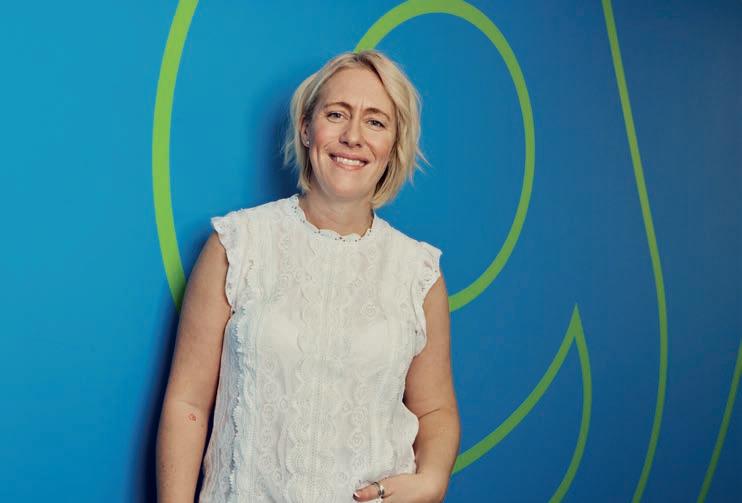
This is the best part of my job! Knowing we are making a difference to people and their lives. Seeing them flourish and empowering them to stand in their individuality is very rewarding and if we can change perceptions of the fitness industry and make it a more diverse, equitable and inclusive sector in the process, then everyone wins.
DIDN’T YOU RECENTLY WIN AN AWARD FOR YOUR DIVERSITY AND INCLUSION WORK?
so that everyone feels welcome and represented in our business and in our gyms.
“It’s wonderful to see them all grow in confidence and stand just that little bit taller with the pride that comes from personal achievement”
I did a degree in Sports Science, but wasn’t sure if I really wanted to work in the sport sector. So I then did a Master's in Clinical Exercise Science to take me more in the direction of using sport to improve health outcomes. I came across the Single Homeless Project (SHP), which had just won some funding from Sport England, and was looking to improve the quality of life of the homeless through sport and physical activity, specifically the over-55s. I thought it sounded interesting and it grew from there.
They are more important now than ever. Homelessness is on the rise and people are having to contend with the cost-of-living crisis. It's all very well having hostels and temporary accommodation, but the people using them are often alone and at a really low point in their life. That’s where we come in as an external service. We’re not there to talk to them about their drug use or about getting a
job. Physical activity or sport gives them a bit of a coping mechanism.
Some clients just tell us to go away. There’s often a bit of scepticism or even fear, but if we can just get them to the first session, they normally keep coming back and absolutely love it. And, as well as the weekly sessions, we do also trips, and have a sports day once a year. We went ice skating at Somerset House in London last week, which was great fun.
I don’t get to go out as much as I did, but I do like the trips and being with clients. It’s lovely having a chat and a laugh, despite everything that's going on in their lives. When I go to hostels, it’s always the clients that come and greet me before the staff, which is so nice.
One of our clients hadn’t been to any of
our sessions, but attended our sports day last year and just loved it. He then got involved in boxing sessions at his hostel, came to our sessions every week and it seemed to nudge him into wanting to sort himself out. He started working with his drug worker, and then got a place in detox and rehab. He lives up North now, has a job and is back in touch with his family. It’s outcomes like this that make it all worthwhile.
In a word: funding. We’re currently funded by Sport England, but that stops at the end of this year and we simply don’t know what’s going to happen after that. The thought that next year we might not be here is really upsetting.

It was a total shock. Our clients have been so sweet in writing me little cards of congratulations. It feels like we’ve created a wonderful big community of lovely people over the last five years.
Eloise Moller was speaking with Dean Gurden










